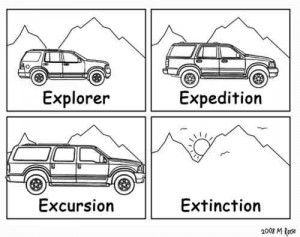Brief by Central Staff
Mining – July 2008 – Colorado Central Magazine
In theory, “in situ leach mining” is a relatively benign way to retrieve minerals from the earth. In practice, though, the proposal has the neighbors in South Park worried.
At issue is an area northeast of Hartsel, where Horizon Nevada Uranium has been staking uranium claims that would be mined by an “in situ” (Latin for “on site” or “in place” ) method. Dozens of holes would be drilled over the mineral deposit; some would be “injection wells” and others “recovery wells.”
It works like this: Water, mixed with one or more reagents (typically sodium bichloride, better known as baking soda) is pumped down the injection wells. The water circulates through the underground deposit (which may have been fractured by explosives to ease circulation) and dissolves uranium compounds.
The recovery wells have underground pumps that push the solution to the surface. At top-side, the minerals are recovered to be sent to a mill for further processing, and the water gets recharged with the reagent and sent back down to continue the cycle.
Does this contaminate groundwater? In some Colorado basins, like the San Luis Valley, there are two aquifers, shallow and deep, separated by a layer of clay or shale. For this part of South Park, the uranium may lie in a deep aquifer beneath a layer of shale, while the wells, and the South Platte River, get their water from the shallow aquifer.
So, if all works well, the uranium is recovered without the major disturbances associated with open-pit or underground mining, because the only rock that gets moved is that involved in drilling the wells. And the impure water stays in the deep aquifer until mining is done, when clean water is injected and the area is reclaimed.
But all may not work well. Thanks to various federal reservations of mineral rights under the Homestead Law, there are claim stakes on private property, and many surface owners are less than thrilled about having their acreage dotted with wells. One of them, Doran Moore, told us that “This basically makes my land unsalable, and I planned to retire here.”
And there’s the possibility that the two aquifers are connected, or that uranium compounds will leak into the top aquifer — where Moore gets his water — which is connected to the Middle Fork of the South Platte River, a major source of Denver’s drinking water. Moore pointed to Kleburg County, Texas, as one place where in-situ uranium mining had contaminated local drinking water.
He and others have organized to oppose the uranium mining (the website for Save Our South Park Water is at http://www.freewebs.com/sospw08/home.htm.
They’ve had some setbacks: the local water conservancy districts did not want to drill baseline wells so that any contamination could be detected quickly.
They’ve also been encouraged with the legislature’s passage of HB 1161, which Gov. Bill Ritter has signed. Among other things, it requires a description of at least five similar in situ operations that demonstrate that the proposed operation will not contaminate groundwater outside the permit area.
Our view is that one should tread very carefully on any project that could contaminate groundwater supplies, especially supplies connected to a major urban water supply system like Denver’s. Colorado has lots of minerals, but we’re generally short of water, and we ought not to poison it.

